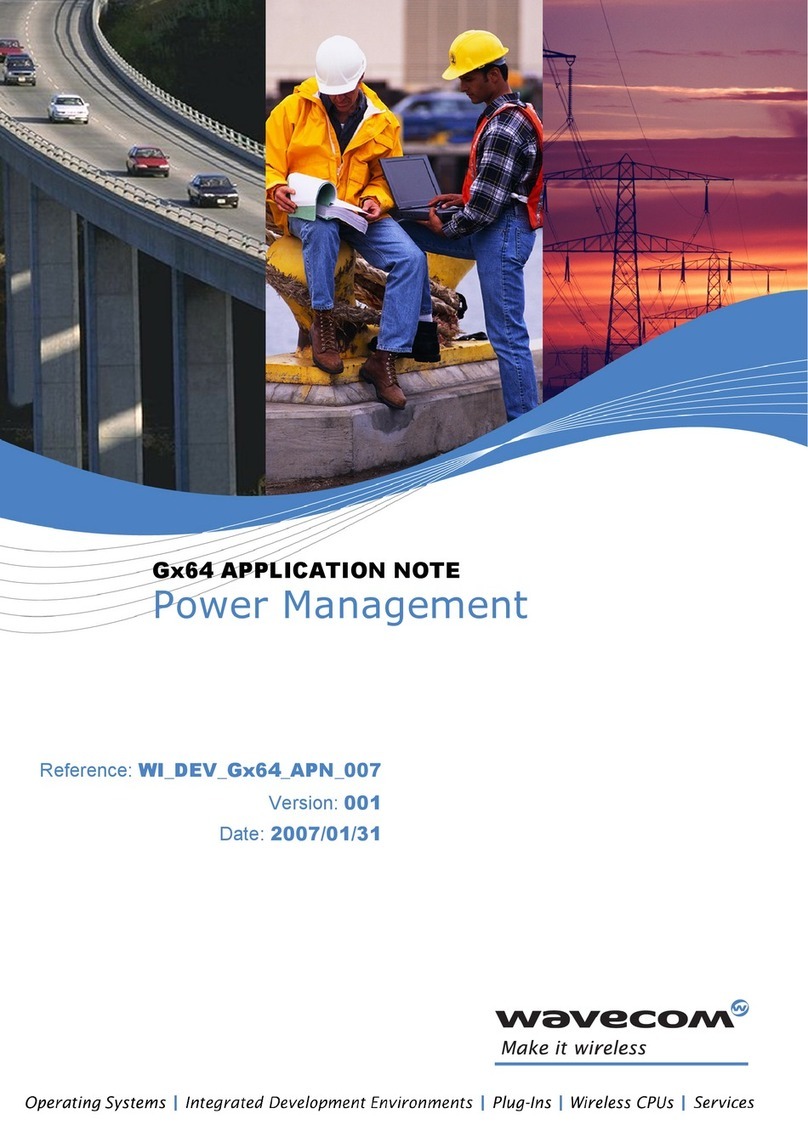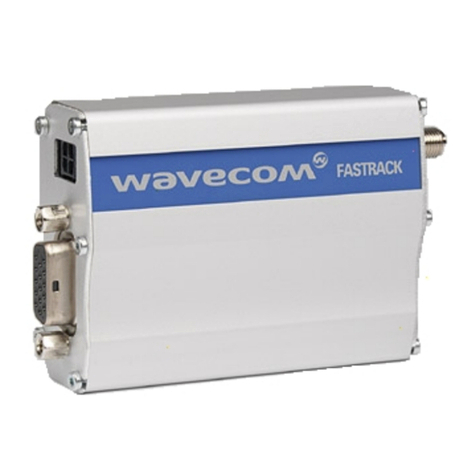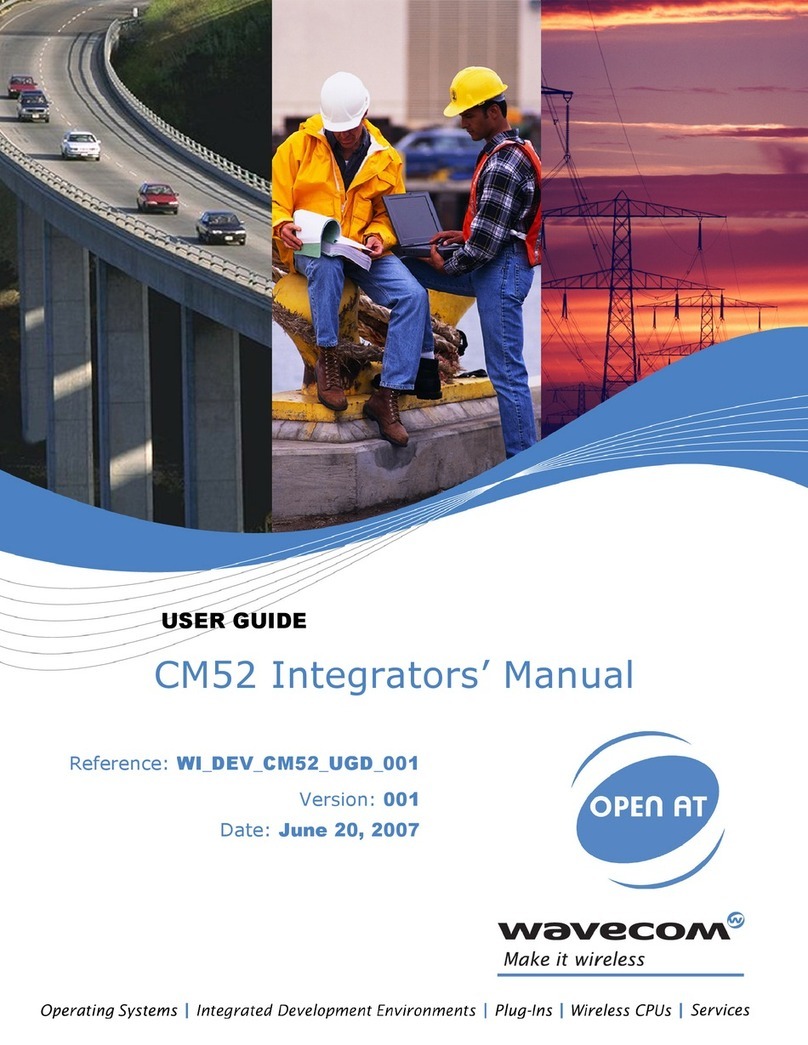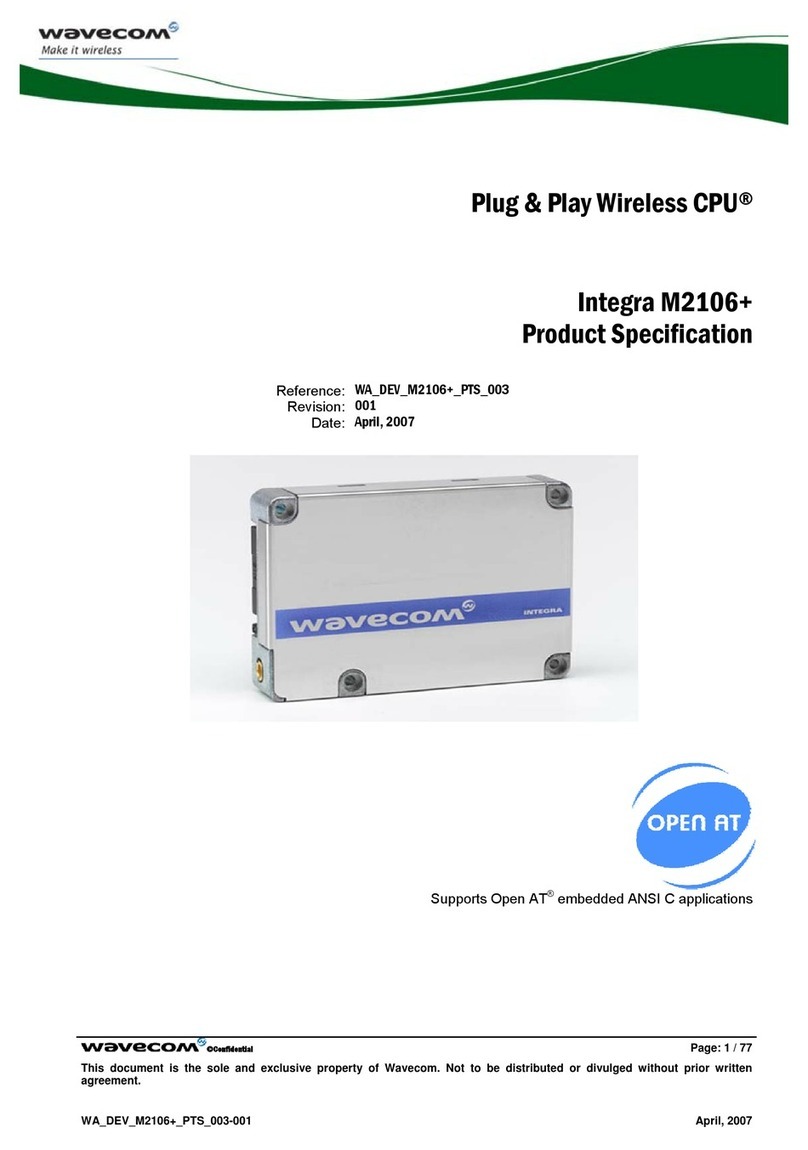
Migration Guide
GR4x to GR64
Page iv of v
GR4x to GR64 Migration Guide
This document is the sole and exclusive property of WAVECOM. Not to be distributed or divulged without prior written agreement.
Ce document est la propriété exclusive de WAVECOM. Il ne peut être communiqué ou divulgué à des tiers sans son autorisation préalable
Table of Contents
1Target Users ................................................................................. 1
1.1 MIGRATION AIM ........................................................................................... 1
1.2 MIGRATION STRATEGY ................................................................................. 1
1.3 MIGRATION VALUE ....................................................................................... 1
2Product Differences ...................................................................... 2
2.1 GR64 VARIANTS ........................................................................................... 2
2.1.1 INTEGRATED SIM VARIANT .................................................................... 2
2.1.2 LEGACY VARIANT.................................................................................. 2
2.2 NOTEWORTHY DIFFERENCES ......................................................................... 3
2.2.1 GSM FREQUENCY COVERAGE ................................................................. 3
2.2.2 GPRS OPERATING CLASS........................................................................ 3
2.2.3 UARTS .................................................................................................. 5
2.2.4 DIGITAL IO............................................................................................ 5
2.2.5 PCM AUDIO........................................................................................... 6
2.2.6 SIM INTERFACE ..................................................................................... 9
2.2.7 DAC INTERFACE .................................................................................... 9
2.2.8 ADC INTERFACE .................................................................................... 9
2.2.9 SPI ........................................................................................................ 9
2.2.10 SLEEP MODE.......................................................................................... 9
2.2.11 MECHANICAL FORM FACTOR............................................................... 10
2.3 GENERAL OBSERVATIONS............................................................................ 10
3Product Comparison ................................................................... 11
3.1 GR64 SIGNAL INTERFACE ............................................................................ 11
3.2 SPECIFIC SIGNAL DIFFERENCES .................................................................... 14
3.2.1 SIGNAL FUNCTIONALITY...................................................................... 14
3.2.2 CHARGING INPUT................................................................................ 17
3.2.3 SIM VOLTAGE...................................................................................... 17
3.2.4 D TO A CONVERTER ............................................................................ 17
3.2.5 REAL TIME CLOCK VOLTAGE................................................................ 18
3.2.6 A TO D CONVERTER ............................................................................ 18
3.2.7 REGULATED VOLTAGE REFERENCE ....................................................... 18

































